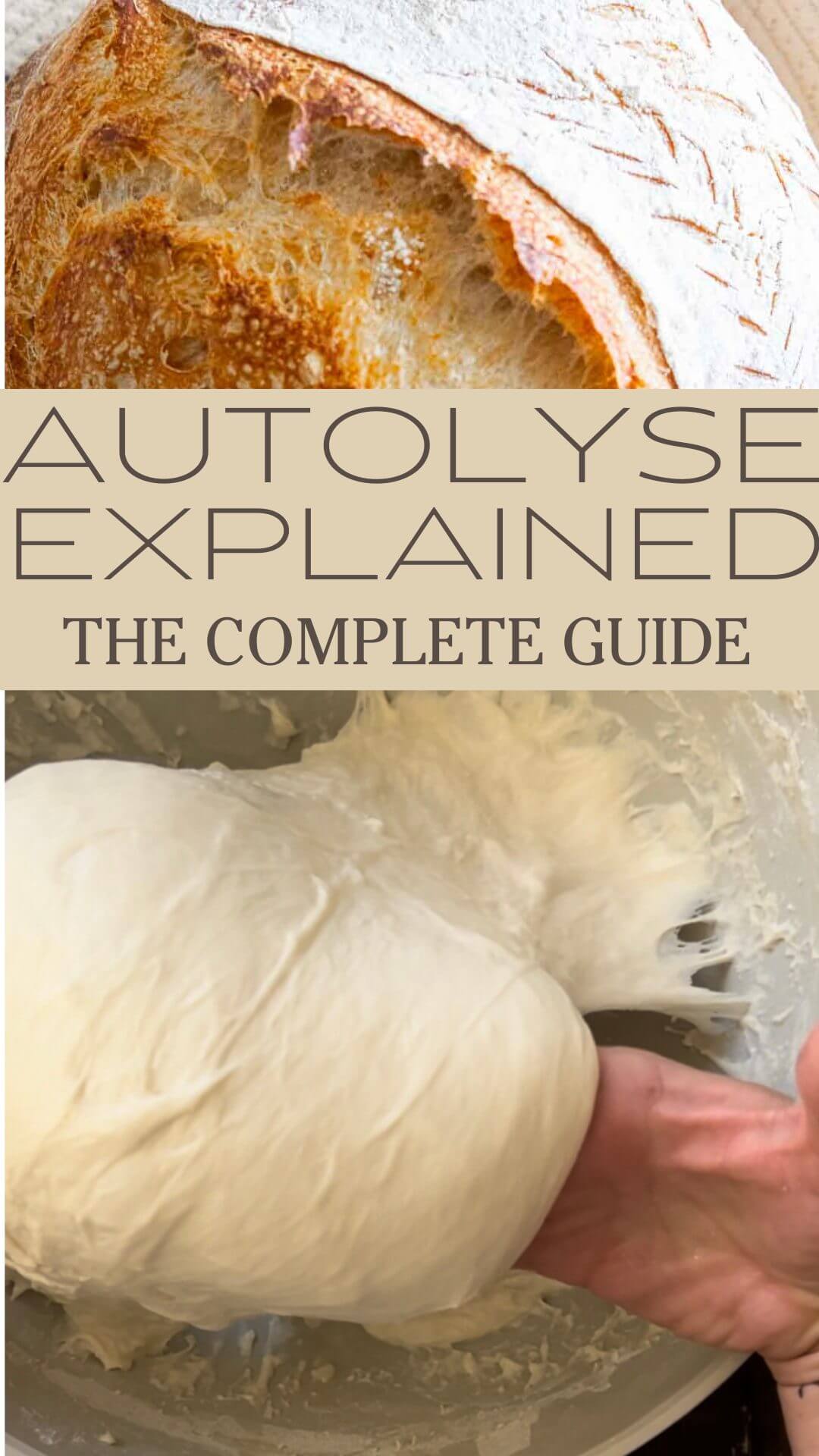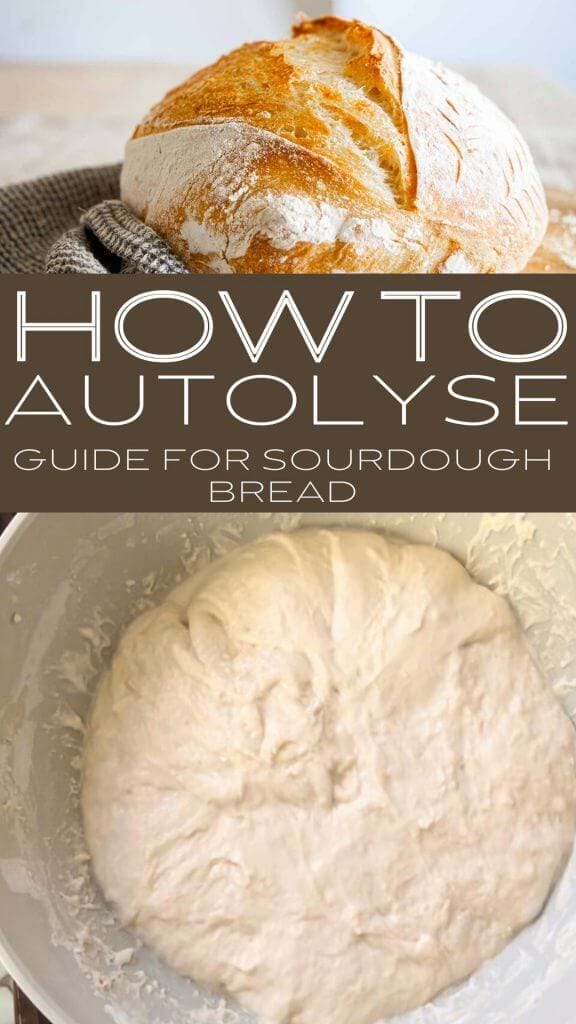What is Autolyse? A Complete Sourdough Bakers Guide
When I started my sourdough journey years ago, I did not use the autolyse method, but since then I have used it off and on depending on my timing and situation. I often get questions regarding what autolyse is, and is it really necessary in sourdough bread making. I want to share all the information I can regarding autolyse, and hopefully that will help you to know if it is the right method for you or not. If you are new to sourdough, make sure to click here to get step by step instructions as well as over 50 amazing sourdough recipes!
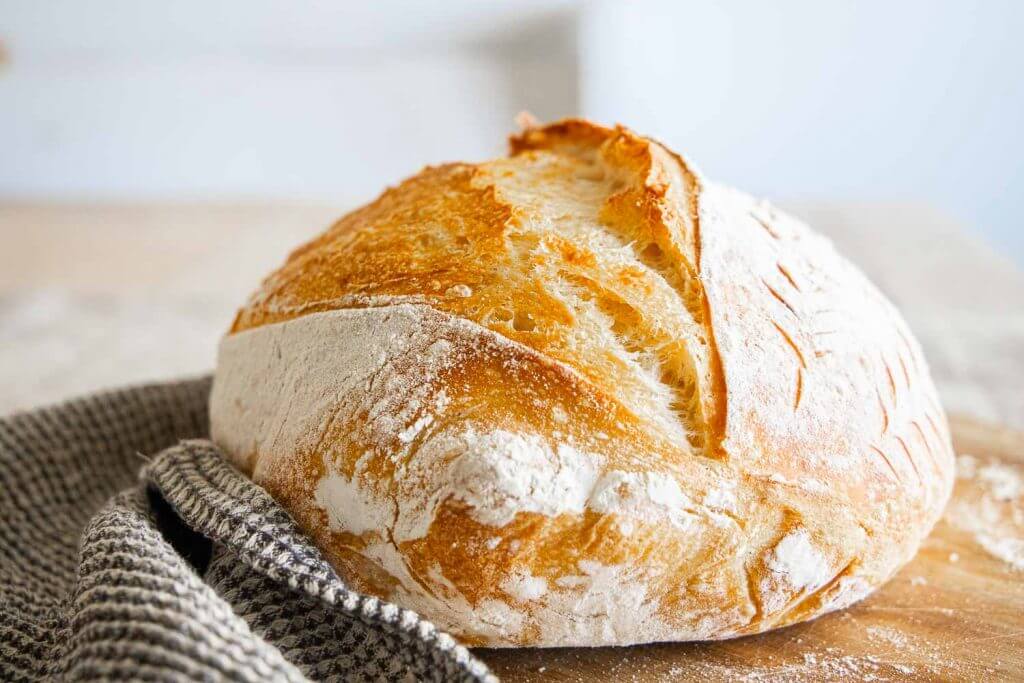
I will say that I do not think that autolyse is a requirement for any and all breads, but I have found it to be a useful tool during my sourdough bread making.
want to know more about sourdough?
Click below to learn step by step how to begin your own sourdough start plus over 50 recipes!
I will be addressing mainly how autolyse effects sourdough making, since that is where I use it the most often. With so many different methods to sourdough baking, I want to share what I do and have done while also giving a disclaimer that I have tried multiple ways to mix and bake sourdough bread and have has a lot of success with many different methods. So, while I may recommend something, it does not mean that it is the only way to do that process. There are a hundred ways to skin a cat and even more ways to make sourdough bread.
Sometimes people will claim there is only the authentic way to make sourdough bread, but I feel that if you find a way that works for you, embrace it and keep at it! If it breaks some of the sourdough rules, that is okay! My goal is to give you as much information as possible to allow you the freedom to create, experiment and become a successful bread baker.
TOOLS YOU’LL NEED
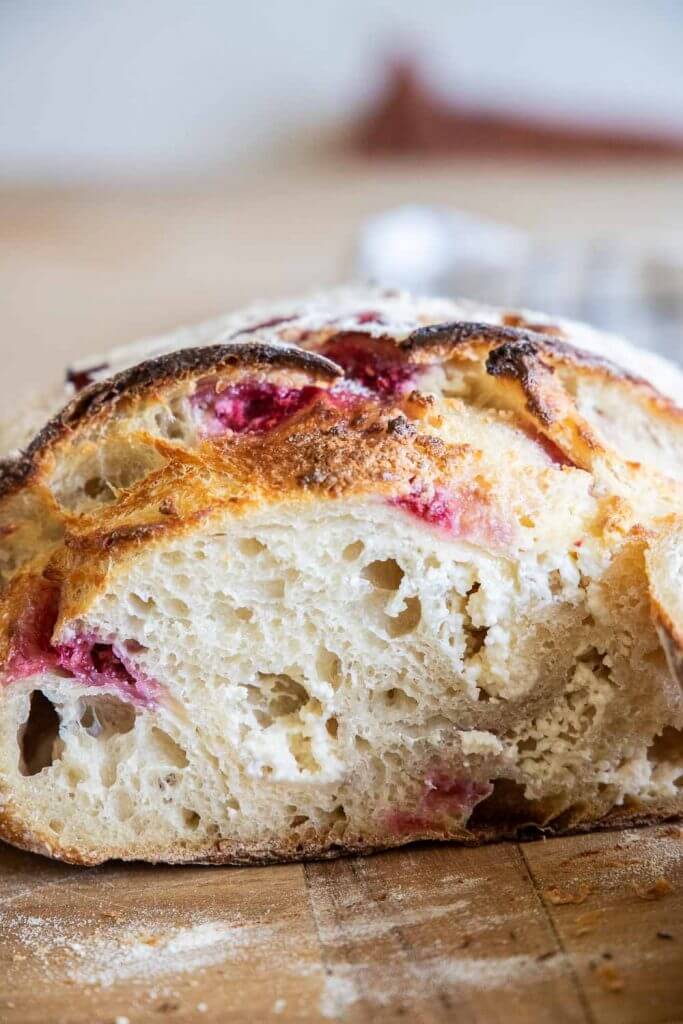

Note: All of this information is for sourdough doughs. These methods are not for use with doughs using yeast. Those will have a different approach overall.
What is Autolyse?
Autolyse, or ( auto-lease), also called autolyze, or autolysis is the method of mixing your dough with water and allowing it to sit for a certain period of time to allow the flour to be completely absorbed by the water.
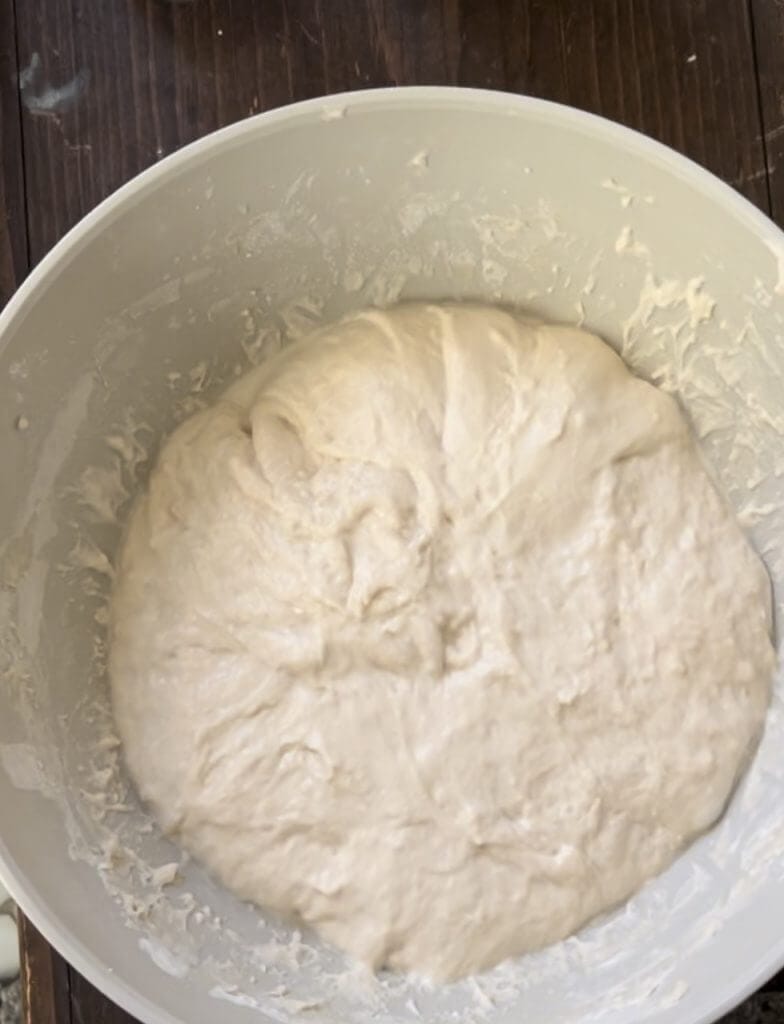
Using the autolyse method gives the flour in your bread recipe time to fully hydrate, and is uniquely helpful when softening whole wheat flour that has a tough bran. Allowing flour and water to rest also helps gluten develop, which means you’ll save time during the kneading process. It releases enzymes upon mixing the water with the flour which helps with the gluten development.
What this is saying is that it helps to gluten development in the flour which makes for a stronger dough. The gluten bonds begin to form and the dough will take on a smooth texture.
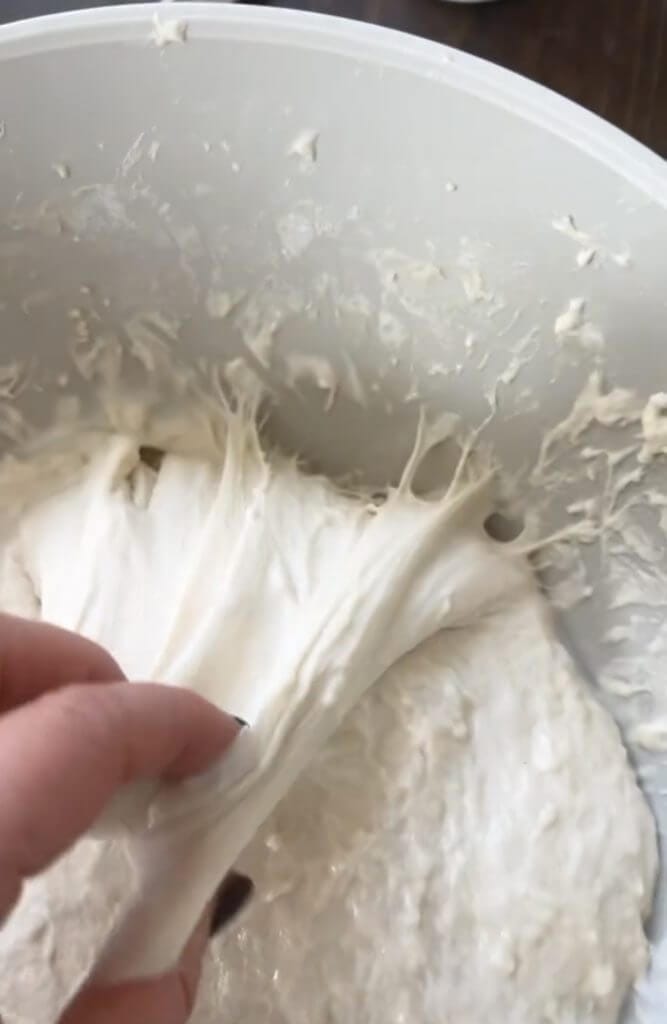
What is gluten?
From the Celiac Foundation they state that Gluten is a general name for the proteins found in wheat (wheatberries, durum, emmer, semolina, spelt, farina, farro, graham, KAMUT® khorasan wheat and einkorn), rye, barley and triticale – a cross between wheat and rye. Gluten helps foods maintain their shape, acting as a glue that holds food together. Gluten can be found in many types of foods, even ones that would not be expected.
When you are mixing your dough, gluten is formed as you mix. The dough becomes stretchy and almost rubbery. You may hear the terms elasticity and extensibility as bread making terms. The more it stretches, the more gluten that is being developed.
What does elasticity and extensibility mean?
A well strengthened dough will or should have both good elasticity and extensibility.
Elasticity si the doughs ability to stretch and then be able to return to its original shape. You want an elastic dough. Simply put, you want the dough to spring back when its stretched.
Extensibility is the ability for the dough to stretch without breaking. Think of the window pane method. If you can stretch your dough nice and thin, as if you are looking through a window pane, that dough has great extensibility. If your dough has this and can still hold its shape, you have both good elasticity and extensibility. This means you have a nice strong dough to work with. This is helpful with oven spring and gives a better texture to the dough. But, you can overdo it and create an overmixed dough.
Overmixing is another story. Yes, you can overmix your dough. If you dough feels tough and dense, it is most likely that it has been over mixed. This will result in a flat tough loaf. So there is a balance to kneading and over kneading your dough. You should shoot for a nice smooth and stretchy dough.
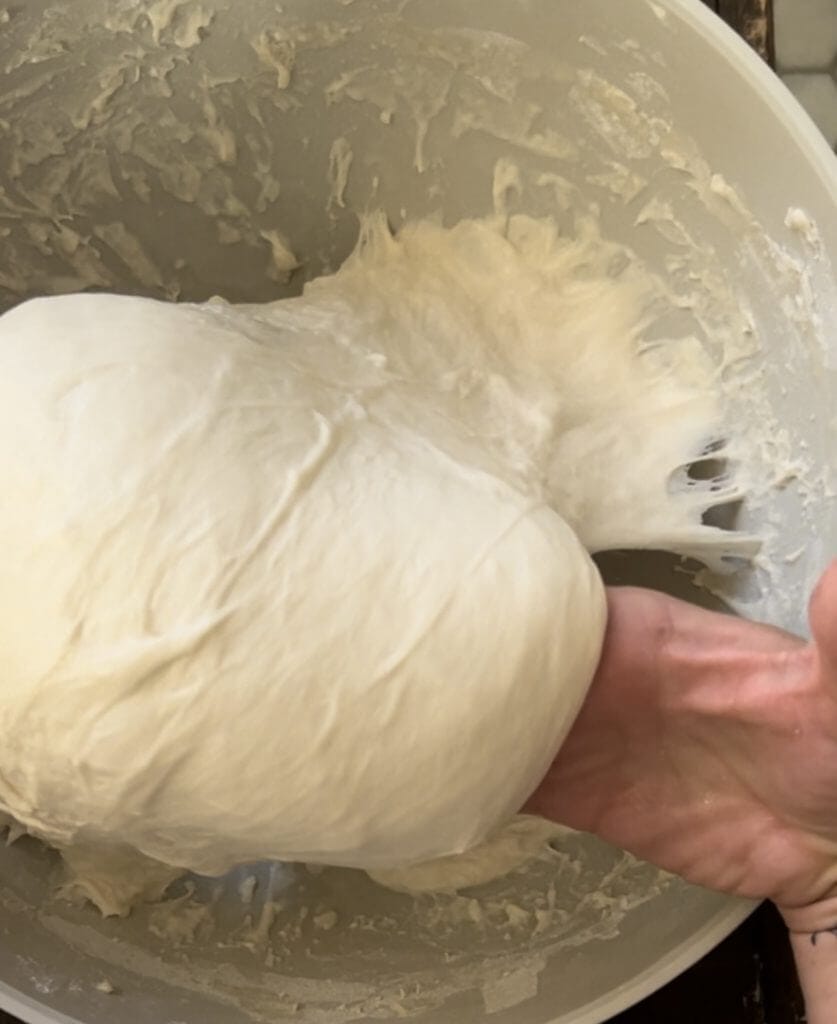
Now, lets talk about how to autolyse your dough..
How to autolyse dough
You will want to mix your flour and water together and let it sit for a certain amount of time. I like to let it sit for 1 hour. After that hour, you can mix in your other ingredients such as your salt, sourdough starter, and others.
Now, there is another term called Fermentolyse which is similar and I feel like I should address it as well.
Fermentolyse is when you add your sourdough starter or (levain) to the flour and water mixture and allow this all to sit for a certain amount of time. After this time, you would then add your remaining ingredients and reserved water. This is different from bulk fermentation. As soon as the starter is added to your flour and water the fermentation process has begun.
This will effect your bulk fermentation time so keep that in mind. I also would keep the fermentolyse stage at 30 minutes or less. You may have to mess around and see which method works for you. I have used both fermentolyse and autolyse in my sour doughs and have found advantages of both.
If you are using a bread flour, you also will not need that long of a fementolyse or autolyse stage because bread flour has a higher percentage of protein which is where the gluten development comes from.
When should a fermentolyse vs autolyse?
Typically when you are working on a lower hydration dough(a dough with less water, more stiff dough) this is the time when you may want to add your starter or levain to the water and flour. This is because you may not have enough water to properly mix the dough without the water in the starter.
Remember
Once you add your sourdough starter to your dough, the fermentation process begins. This will affect the amount of time you will need to bulk ferment.
What happens after I autolyse my dough?
After you autolyse your dough, you will want to add your final ingredients, typically salt, reserved water, honey or other ingredients. Once you are done autolysing, you will notice there is a stronger gluten network developing.
Benefits of Autolyse
- You can work with more whole grains
- You can easily work with a higher hydration dough
- Contributes to a more open crumb sourdough
- It produces a smoother, more elastic dough
- Creates a nice strong gluten structure
- Can reduce kneading time
- Stretch and folds are much easier
- Can help with oven spring during baking
Should I autolyse my dough?
Yes, no, maybe? Honestly it is all what works for you and what you consider a great loaf of bread. If you are using a more whole grain flour autolysing can be very beneficial. The type of flour will effect your dough in many ways. Simple white bread flours are much easier to work with that whole wheat bread flours, rye flour and others.
I do prefer to autolyse my dough if I can. Certain things do effect whether I do, mostly convenience and time. If I am in a bit of a hurry I will not autolyse, but I may fermentolyse. I find this is all comes down to personal preference. I prepare my dough according to the time available, time of day as well as other factors that affect the development of my dough.
In the end, I think each baker needs to experiment for themselves and find a method that works for them. Try each method and find what sticks for you.
How long should I autolyse my dough?
I would recommend less than one hour. I have done it for as low as 15 minutes with beneficial results.
Sourdough Autolyse Tip!
Dont forget the salt! It can be easy to forget to add the salt or other ingredients when autolysing or fermentalizing your dough. If you tend to forget, set yourself a reminder! While it wont ruin your dough to omit the salt, it definitely makes for a much better dough and bread! The flavor is better as well as the texture of the dough!
I hope this post helps you to understand autolyse a bit more. There are tons of tips and different methods to making sourdough. Find a method that works for you. Enjoy the process.
Don’t forget to pin this for later!
